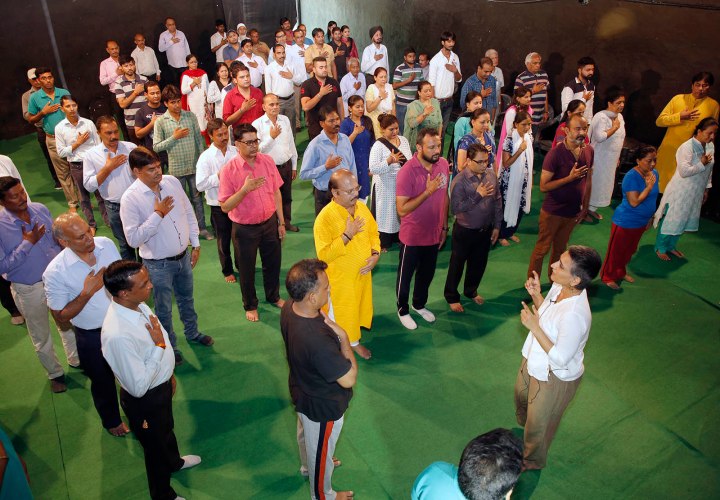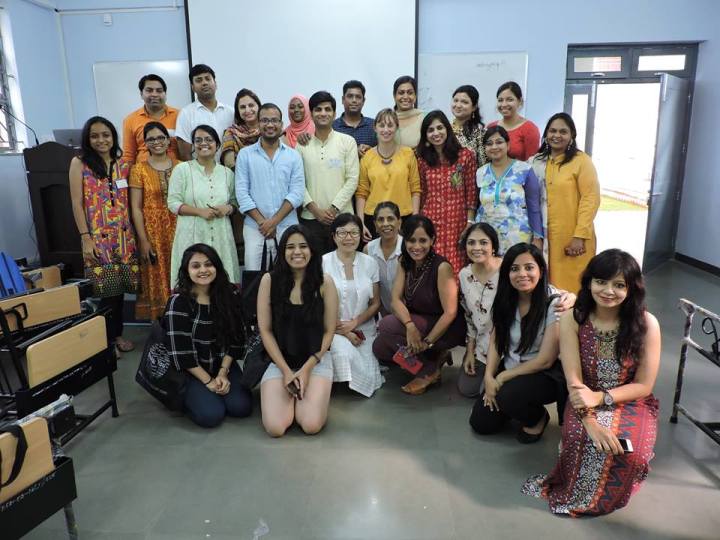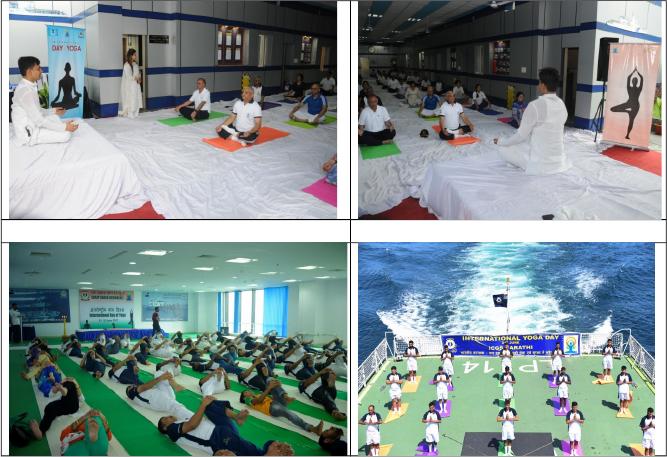WHAT DOES AN INDIAN SMART CITY LOOK LIKE?
 |
|---|
21.06.2017 12:22:41 – CPR and CSH are pleased to invite you to a workshop on
What does an Indian smart city look like?
What does an Indian smart city look like?
(live-PR.com) – CPR and CSH are pleased to invite you to a workshop on
What does an Indian smart city look like?
Ashwathy Anand, Ajai Sreevatsan, and Persis Taraporevala
Tuesday, 27 June 2017, 3:45 p.m.
Conference Hall, Centre for Policy Research
What does an Indian smart city look like?
Ashwathy Anand, Ajai Sreevatsan, and Persis Taraporevala
Tuesday, 27 June 2017, 3:45 p.m.
Conference Hall, Centre for Policy Research
Image Source
June 2017 will mark the two year anniversary of the Smart City Mission (SCM), one of the flagship projects undertaken by the Government of India
June 2017 will mark the two year anniversary of the Smart City Mission (SCM), one of the flagship projects undertaken by the Government of India
(GOI) towards urban development. The mission has generated extensive interest with a clear disjunction in opinions regarding the potential effectiveness of the mission in achieving its stated goal of creating ‘replicable models’ of urban development that can inspire change across cities in India. Given the scale and significance of the mission, it could create long term changes in the governance and financing patterns of urban India and affect the quality of life of millions of citizens.
A unique aspect of the Mission is the ambiguity of what constitutes a smart city. The Ministry of Urban Development (MoUD) has clearly stated that there is no singular definition of a smart city and provided each city the opportunity to define ‘smartness’ for themselves. The result has been a mix of ideas which include both high-end digital and more established traditional solutions to tackle gaps in urban form and quality of life. Through an analysis of the accepted smart city proposals and ancillary secondary data, this discussion seeks to present an empirical understanding of what India thinks a smart city looks like and examine the potential of achieving its aims of creating more liveable, sustainable and financially secure cities.
Ashwathy Anand is a trained architect from the School of Planning and Architecture, Bhopal and is currently associated with the Centre for Policy Research, New Delhi. As a practitioner she has worked on the City Heritage Plan for Mathura under the Heritage City Development and Augmentation Yojana (HRIDAY). Her academic research interests focus on understanding the processes involved in transforming and regenerating Indian cities. She was an Urban Fellow at IIHS Bangalore.
Ajai Sreevatsan is a former investigative reporter with The Hindu and is currently associated with the Centre for Policy Research, New Delhi. As a journalist, his primary interest lay in questions pertaining to urban inequality, local democracy and participative governance. He has also written extensively on environmental issues. Till recently, he was an urban fellow at IIHS, Bangalore. He has an M.S. in Journalism from Northwestern University.
Persis Taraporevala is a Research Associate at the Centre for Policy Research, New Delhi. She focuses on issues of citizenship, governance and social justice in the urban context. Her work includes the privatisation of government structures in India, participatory processes of planning and the agency of immigrants in urban villages. She has an MPhil in Development Studies from the University of Oxford.
As part of our Urban Workshop Series, the Centre for Policy Research (CPR) and Centre de Sciences Humaines (CSH), Delhi, are delighted to invite you to a workshop on What does an Indian smart city look like? by Ashwathy Anand, Ajai Sreevatsan and Persis Taraporevala.
Date: Tuesday, 27th June 2017
Time: 3.45 p.m.
Venue: Conference Hall, Centre for Policy Research, Dharma Marg, Chanakyapuri, New Delhi 110 021
—————————— —————————— —————————— —————————— —————————— ——————-
June 2017 will mark the two year anniversary of the Smart City Mission (SCM), one of the flagship projects undertaken by the Government of India (GOI) towards urban development. The mission has generated extensive interest with a clear disjunction in opinions regarding the potential effectiveness of the mission in achieving its stated goal of creating ‘replicable models’ of urban development that can inspire change across cities in India. Given the scale and significance of the mission, it could create long term changes in the governance and financing patterns of urban India and affect the quality of life of millions of citizens.
A unique aspect of the Mission is the ambiguity of what constitutes a smart city. The Ministry of Urban Development (MoUD) has clearly stated that there is no singular definition of a smart city and provided each city the opportunity to define ‘smartness’ for themselves. The result has been a mix of ideas which include both high-end digital and more established traditional solutions to tackle gaps in urban form and quality of life. Through an analysis of the accepted smart city proposals and ancillary secondary data, this discussion seeks to present an empirical understanding of what India thinks a smart city looks like and examine the potential of achieving its aims of creating more liveable, sustainable and financially secure cities.Ashwathy Anand is a trained architect from the School of Planning and Architecture, Bhopal and is currently associated with the Centre for Policy Research, New Delhi. As a practitioner she has worked on the City Heritage Plan for Mathura under the Heritage City Development and Augmentation Yojana (HRIDAY). Her academic research interests focus on understanding the processes involved in transforming and regenerating Indian cities. She was an Urban Fellow at IIHS Bangalore.
Persis Taraporevala is a Research Associate at the Centre for Policy Research, New Delhi. She focuses on issues of citizenship, governance and social justice in the urban context. Her work includes the privatisation of government structures in India, participatory processes of planning and the agency of immigrants in urban villages. She has an MPhil in Development Studies from the University of Oxford.
Ajai Sreevatsan is a former investigative reporter with The Hindu and is currently associated with the Centre for Policy Research, New Delhi. As a journalist, his primary interest lay in questions pertaining to urban inequality, local democracy and participative governance. He has also written extensively on environmental issues. Till recently, he was an urban fellow at IIHS, Bangalore. He has an M.S. in Journalism from Northwestern University.
—————————— —————————— —————————— —————————— —————————— ——————-
This is the eighty ninth in a series of Urban Workshops planned by the Centre de Sciences Humaines (CSH), New Delhi and Centre for Policy Research (CPR). These workshops seek to provoke public discussion on issues relating to the development of the city and try to address all its facets including its administration, culture, economy, society and politics. For further information, please contact: Christine Ithurbide at christine@csh-delhi.com, Pa rtha Mukhopadhyay at partha@cprindia.org or Marie-Hélène Zerah at marie-helene.zerah@ird.fr
This workshop is free and there is no registration. Find all the videos of our previous workshops on the following link : www.cprindia.org/ projects/cpr-csh-urban- workshop
We look forward to welcoming you to CPR for what promises to be an interesting discussion. Please feel free to share this invitation with friends and colleagues who may be interested.
Best regards,
Christine Ithurbide
—
Garanti sans virus. www.avast.comEdit “What does an Indian smart city look like?”
| Contact information: sagar media inc
Contact Person:
Naresh sagar |
NSD : CELEBRATION OF 3RD INTERNATIONAL YOGA DAY

On the occasion of 3rd International Yoga Day, National School of Drama has celebrated this event on the day of 21st June 2017 from 10.00 am onwards in the campus by organizing a Yoga Camp under a Yoga Expert Ms. Sunaina Aarah in which Director (NSD), Registrar (NSD), Dy. Registrar (NSD), Faculty, Students, Artists and Staff participated and did couple of exercises and took initiative to bring Yoga in their daily life.
On this day, Prof. Waman Kendre, Director, NSD has stated that “Yog is our heritage, our precious gift from our ancestors and we should bring it to our life for our own benefit”.
Ms. Sunaina Aarha, Yog Expert emphasized on the value of co-ordination between breathe and movements during yog. She trained everyone there on the basis of same aspect i.e. breathe and movement coordination.
After an hour yog practice and lecture, the programme was ended with Vote of Thanks by Sh. A.K. Barua, PRO, NSD to all those who have participated on this great occasion.
3RD EDITION OF THE FRENCH-LANGUAGE TEACHER TRAINING PROGRAMME

3RD EDITION OF THE FRENCH-LANGUAGE TEACHER TRAINING PROGRAMME
 |
|---|
21.06.2017 12:29:59 – 3RD EDITION OF THE FRENCH-LANGUAGE TEACHER TRAINING PROGRAMME
(live-PR.com) – The Embassy of France and Institut français India organised the 3rd edition of the French-language Teacher Training Programme Université régionale BELC Inde, Asie centrale et Asie du sud
22-25 May 2017, in Goa
New Delhi, 30 May 17
Institut français India, the cultural service of the French Embassy, together with the International Center for Pedagogical Studies in Paris (CIEP) organised the 3rd
Regional University BELC India, Central Asia and South Asia in Goa from 22-25 May 2017. The four-day training programme for French-language teachers was organised in collaboration with the Department of French and Francophone Studies at the University of Goa, in partnership with Goyal Publishers & Distributors.
The Regional University BELC is a highlight of the teaching of French as a foreign Language in India. The event took place in Indira Gandhi National Open University (IGNOU), Delhi in May 2015. The following year, it took place at Amity University Noida, Delhi. In 2017, it was decided that the BELC would take place in a different region every year. Goa University had been chosen, thanks to Prof. Varun Sahni, Vice-Chancellor, whose policy was to increase higher education cooperation with France.
This May, Goa University hosted 122 teachers from various backgrounds (Alliances Françaises, schools and universities) and from various countries, including India, Afghanistan, Bangladesh, Kazakhstan and Sri Lanka. Seven experts in didactics for the teaching of French as a Foreign Language supervised 30 hours of training to these teachers from schools and universities. The teachers were enrolled in different workshops, according to their specific needs: methodology, French for specific purposes, linguistic and cultural links, development of oral and written skills, literature, grammar, group interaction, etc. Institut français India also offered a programme of cultural activities, through visits to various locations and concerts in Goa.
The event proved to be a great success to teachers, and participants comments were as follows: “Very useful and efficient, in a friendly atmosphere”, “a wonderful experience”, “rewarding”, “also useful for the intercultural exchanges with teachers from other countries”, “very well organised”, “good opportunity to share ideas and experiences”, “rewarding”, “work with pleasure”, “I recommend!”, “my objectives have all been met”.
The main objective of the service for cooperation in French Language, Education and Training at Institut français India (IFI), as defined by the French Ministry of Europe and Foreign Affairs, is to promote and support French-language training in India by providing quality training for teachers. To this effect, pedagogical and linguistic workshops and seminars are organised throughout the country, in schools, universities and Alliances Françaises, at a national and regional level.
Through such cooperation the French Embassy aims to develop and enhance links between French and Indian schools and universities, to promote student mobility, and to increase students’ employability on the international labour market.
Institut français India, the cultural service of the French Embassy, together with the International Center for Pedagogical Studies in Paris (CIEP) organised the 3rd Regional University BELC India, Central Asia and South Asia in Goa from 22-25 May 2017. The four-day training programme for French-language teachers was organised in collaboration with the Department of French and Francophone Studies at the University of Goa, in partnership with Goyal Publishers & Distributors.
Institut français India, the cultural service of the French Embassy, together with the International Center for Pedagogical Studies in Paris (CIEP) organised the 3rd Regional University BELC India, Central Asia and South Asia in Goa from 22-25 May 2017. The four-day training programme for French-language teachers was organised in collaboration with the Department of French and Francophone Studies at the University of Goa, in partnership with Goyal Publishers & Distributors.
The Regional University BELC is a highlight of the teaching of French as a foreign Language in India. The event took place in Indira Gandhi National Open University (IGNOU), Delhi in May 2015. The following year, it took place at Amity University Noida, Delhi. In 2017, it was decided that the BELC would take place in a different region every year. Goa University had been chosen, thanks to Prof. Varun Sahni, Vice-Chancellor, whose policy was to increase higher education cooperation with France.
| Contact information: sagar Media inc
Contact Person:
Naresh sagar |
FIGHTER PILOTS DOMINATE SKIES 1000 KM RADIUS – NO BSF MES
June20, 2017 (C) Ravinder Singh progressindia2015@gmail.com
I don’t know the Politics behind ‘Pathankot Report’ indicting Commandant of the Pathankot Airbase – a fighter Pilot.
Fighter Pilots are FRONTLINE of India’s Security. BSF or Punjab Police who failed in their duty to let in Terrorists almost every day and no BSF or PP Commandant was dismissed.
Role of Fighter Pilot Commander is to INTERCEPT Intruding Enemy Fighters within 60 seconds at all times and Cover & Dominate upto 1000 km radius in Fighter Jets flying with Weapons at 2000 kmph+ speed, MES is responsible for Boundary Wall & Lighting.
In 1965 war IAF Fighter Pilots Nirmaljeet Singh Sekhon and Manjit Singh Sekhon cousins at Srinagar Airbase responded within seconds – Intercepted, Hit and Shot Down Pakistan Fighters otherwise Kashmir would have been lost.
In 1948 invasion of Kashmir – IAF Pilots Airlifted Army to Kashmir to save Kashmir.
In 1999 Kargil War also role IAF was attack Invaders from Air – it was Army who re-captured the lost ground.
I was responsible for JE(E) Security of Central Store near Leela Hotel in Chanakyapuri Delhi – India’s biggest in 1976.
Though my expected Role was to Control the Flow of Incoming and Outgoing stores, there was separate Audit Unit – but I exercised Much Greater responsibility used to make Surprise Checks. Even as DGS&D and ISI were responsible for QUALITY – I extended by responsibility on QUALITY also. Anyone whispering in my ears ‘Sir Entire Stock of Lamps Was Of Poor Quality’ – I would direct stores to ‘Issue Good Quality Products Only’ – I was performing at 500% Efficiency.
Even in two years plus job I didn’t INSPECT boundary wall or street lighting which was responsibility of PWD and in charge of security guards.
It is Unfortunate INDIA never had Professional DEFENSE MINISTER – Lameduck Mediocre in last 10 years. It makes no sense to make F-16s in India when Enemy already operates F-16 for 30 years and entirely familiar with it. Buying 30-40 years old technology a huge cost than latest products.
Finally no Cabinet Minister had been dismissed for TOTAL failure in many cases in three years when they are not even qualified. Vishnu Bhagat, Manjit Singh Sekhon were and now Air Commodore are PUNISHED – VK Singh was rewarded for indiscipline in service.
There is 100 Times more security for YOGA event than Pathankot Air Base. It was political failure when GOI is investing in Multi-Layer Fencing but not protecting – Why didn’t India’s VITAL INSTALLATIONS have similar fencing?
Ravinder Singh, Inventor & Consultant, INNOVATIVE TECHNOLOGIES AND PROJECTS
Y-77, Hauz Khas, ND -110016, India. Ph: 091- 9871056471, 9718280435, 9650421857
Ravinder Singh* is a WIPO awarded inventor specializing in Power, Transportation,
ICG CELEBRATES YOGA DAY CELEBRATIONS

YOGA DAY CELEBRATIONS
With an aim to introduce the benefits of yoga to the personnel of the service, the International Yoga day was celebrated by the Indian Coast Guard (ICG) across all formations in a befitting manner. All the 5 Regional Headquarters, 14 District Headquarters, 42 Stations and 7 Air Enclaves of the ICG conducted yoga sessions simultaneously, at their respective locations on 21 Jun 17. The Yoga session commenced at 0600 hrs on 21 Jun simultaneously at all units. The ships whilst on deployment also conducted yoga session for their officers and personnel. Approximately 10,000 personnel including the Regional Commanders, Officers, men and their families participated in the event. In addition, the Yoga day was also organised at the Coast Guard Headquarters, New Delhi and at Sec 24 NOIDA. Addl DG VSR Murthy, PTM, TM, alongwith the officers, men and their families posted at New Delhi participated in the event and performed various yoga asanas.
The yoga session at the Coast Guard Headquarters, New Delhi and Sector-24 at NOIDA was performed under the supervision of teachers of “Art Of Living”. During the session, the audience were appraised about the advantages of yoga for their general health, well being and self awareness. In addition to these asanas, simple pranayama and concentration of the mind was also practiced. The module has been developed by the Ministry of AYUSH, in consultation with all the Yoga institutes in the country.
In addition to conduct of Yoga on 21 Jun, the ICG regularly conducts yoga sessions across all formations under supervision of qualified instructors.
No comments:
Post a Comment